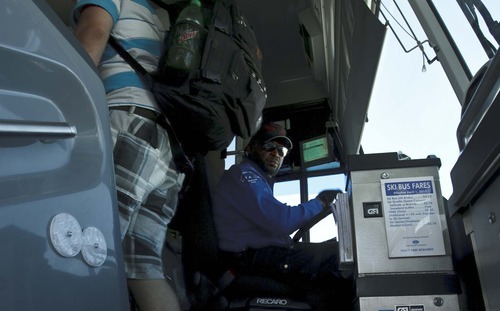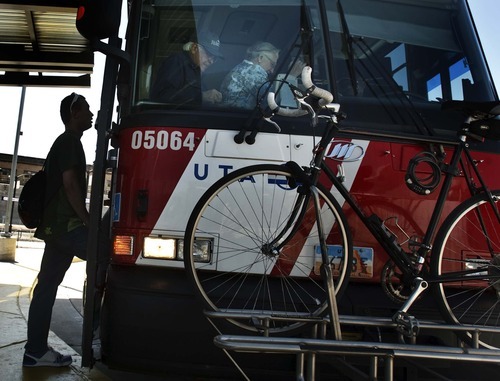This is an archived article that was published on sltrib.com in 2012, and information in the article may be outdated. It is provided only for personal research purposes and may not be reprinted.
Transit officials hoped that a long-sought bus route between Park City and Salt Lake City would break even financially, but during the first seven months of service, it failed to come remotely near that goal.
In the best month so far, January, the buses averaged only about 38 percent of rider capacity — far below the 90 percent mark needed to break even.
In the worst month, April, buses were only 18 percent full — meaning they had four empty seats for every one occupied, according to ridership data provided by the Utah Transit Authority at the request of The Salt Lake Tribune.
While UTA provides the buses and operates the routes, the service is a joint venture with Summit County and Park City. Those two local governments agreed to subsidize the operation by up to $470,000 in the first year. After that is spent, UTA has agreed to provide subsidies of up to $180,000.
"We're not where we wanted to be, but we're not really too disappointed, either," said Kent Cashel, Park City Transit and Transportation Department manager. "It was aggressive to think that we could break even in the first year, which is why we asked the council to subsidize it in the first year."
He said such ventures often take at least three years to break even, taking time for consumers to discover and move to them. While he said officials will assess the data, he feels they are committed to the routes for another year and probably longer.
"We aren't too concerned," said UTA spokesman Gerry Carpenter. "We are committed to continuing this service for another year. There were a number of factors that we believe contributed to the lower-than-desired ridership this year."
Fewer skiers than normal took the buses because of the dry winter, Carpenter said. "We counted on ski patron trips that didn't materialize with the lighter-than-usual ski service."
Also, Park City ski resorts hired fewer people.
"So our uphill commute market was considerably lighter than expected," Carpenter said, though he added the downhill commuter traffic from Park City to Salt Lake City was close to projections.
In short, Carpenter said, "It wasn't the most advantageous year to launch a new service of this type."
Cashel said if numbers grow next year — and suggest the routes could become self-sustaining over time — he feels his council would continue short-term subsidies. He adds that all transit in Park City is fare-free, so residents and businesses are used to subsidizing transit for such benefits as reducing congestion and pollution.
"But at the same time," Cashel said, "if routes are not productive, then they are not worth continuing."
Some changes are ahead to try to increase ridership — including more aggressive marketing and scheduling shifts.
"We're going to make some tweaks to the schedule to see if we can attract more ski patrons," saying that market could be tapped better and that this season the buses targeted mostly commuters.
The bus service — which began in October — costs $5.50 each way. Riders also can purchase a three-day pass for $33 or pay $242 for a 30-day pass. During the ski season from December through April, 17 trips a day were offered between the cities. Since then, eight trips a day have been scheduled.
Carpenter said UTA uses large motor coaches on the route, with a capacity for about 40 passengers. Ridership data shows that January had the most riders — 5,898 that month, for a weekday average of 216. Divided by the 14 trips offered each day, that meant each trip averaged 15 riders or about 38 percent capacity.
Carpenter said ridership would have needed to average 490 passengers a day to reach the break-even point. "So even in the peak in January, we were less than half of what we would have needed."
April had the lowest ridership during the ski season — 2,491 people for the month, for a weekday average of 100 people. Divided by the 14 daily trips, that averages about 7 passengers per trip — about 18 percent capacity. Data show that 25,400 passenger trips were made on the buses from October through April.
Park City-Salt Lake City buses not so popular
Officials hoped new transit buses between Salt Lake City and Park City would be self-sustaining, but they need 90 percent capacity to break even financially. They have not come close during their first seven months:
Best month • January, with 38 percent capacity — or three empty seats for every two that are filled.
Worst month • April, with 18 percent capacity — or four empty seats for every one that is filled.





